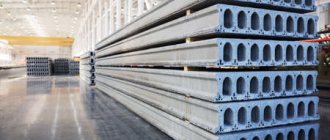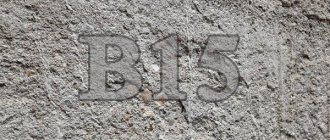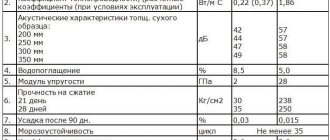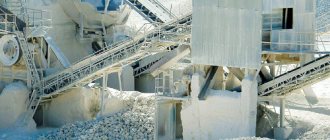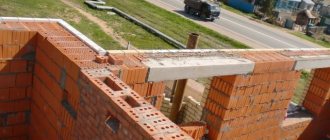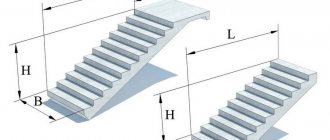GOST 28013-98
Group Zh13
INTERSTATE STANDARD BUILDING SOLUTIONS 1)*
General technical conditions
MORTARS
General specifications
OKS 91.100.10 OKSTU 5870
Date of introduction 1999-07-01
Preface
1 DEVELOPED by the State Central Research and Design Institute of Complex Problems of Building Structures and Structures named after. V.A. Kucherenko (TsNIISK named after V.A. Kucherenko), Research, Design and Technological Institute of Concrete and Reinforced Concrete (NIIZhB), with the participation of JSC "Experienced Rosconitstroy" of the Russian Federation
INTRODUCED by the State Construction Committee of Russia
2 ADOPTED by the Interstate Scientific and Technical Commission for Standardization, Technical Regulation and Certification in Construction (MNTKS) on November 12, 1998.
Voted for acceptance
| State name | Name of the state construction management body |
| Republic of Armenia | Ministry of Urban Development of the Republic of Armenia |
| The Republic of Kazakhstan | Committee on Housing and Construction Policy under the Ministry of Energy, Industry and Trade of the Republic of Kazakhstan |
| Republic of Kyrgyzstan | State Inspectorate for Architecture and Construction under the Government of the Kyrgyz Republic |
| The Republic of Moldova | Ministry of Territorial Development, Construction and Communal Services of the Republic of Moldova |
| Russian Federation | Gosstroy of Russia |
| The Republic of Tajikistan | State Construction Committee of the Republic of Tajikistan |
| The Republic of Uzbekistan | State Committee for Architecture and Construction of the Republic of Uzbekistan |
3 INSTEAD GOST 28013-89
4 ENTERED INTO EFFECT on July 1, 1999 as a state standard of the Russian Federation by Decree of the State Construction Committee of Russia dated December 29, 1998 N 30
AMENDED Change No. 1, adopted by the Interstate Scientific and Technical Commission for Standardization, Technical Standards and Certification in Construction (MNTKS) on December 7, 2001, and put into effect on the territory of the Russian Federation by Resolution of the State Construction Committee of Russia dated May 7, 2002 N 23 from September 1, 2002
Change No. 1 was made by the database manufacturer according to the text of BLS No. 9, 2002
APPENDIX A (for reference). List of regulatory documents
APPENDIX A (for reference)
GOST 4.233-86 SPKP. Construction. Construction solutions. Nomenclature of indicators GOST 125-79 Gypsum binders. Specifications
GOST 2226-88 Paper bags. Specifications
GOST 2642.5-97 Refractories and refractory raw materials. Methods for determining iron oxide
GOST 2642.11-97 Refractories and refractory raw materials. Methods for determining potassium and sodium oxides
GOST 3594.4-77 Molding clays. Methods for determining sulfur content
GOST 5578-94 Crushed stone and sand from ferrous and non-ferrous metallurgy slags for concrete. Specifications
GOST 5802-86 Construction mortars. Test methods
GOST 8735-88 Sand for construction work. Test methods
GOST 8736-93 Sand for construction work. Specifications
GOST 9179-77 Construction lime. Specifications
GOST 10178-85 Portland cement and Portland slag cement. Specifications
GOST 10181-2000 Concrete mixtures. Test methods
GOST 10354-82 Polyethylene film. Specifications
GOST 18481-81 Hydrometers and glass cylinders. Specifications
GOST 21216.2-93 Clay raw materials. Method for determining fine fractions
GOST 21216.12-93 Clay raw materials. Method for determining residue on a sieve with mesh N 0063
GOST 22266-94 Sulfate-resistant cements. Specifications
GOST 23732-79 Water for concrete and mortars. Specifications
GOST 24211-91 Additives for concrete. General technical requirements
GOST 25328-82 Cement for mortars. Specifications
GOST 25592-91 Ash and slag mixtures from thermal power plants for concrete. Specifications
GOST 25818-91 Fly ash from thermal power plants for concrete. Specifications
GOST 25820-83 Lightweight concrete. Specifications
GOST 26633-91 Heavy and fine-grained concrete. Specifications
GOST 26644-85 Crushed stone and sand from thermal power plant slag for concrete. Specifications
GOST 30108-94 Construction materials and products. Determination of specific effective activity of natural radionuclides
GOST 30459-96 Additives for concrete. Methods for determining the effectiveness of SNiP II-3-79* Construction heating engineering
(Changed edition, Amendment No. 1).
Characteristics
During use, this indicator should be:
- SRS for facing and further processing with enameled tiles. At minimum temperatures N2 and O2 should be equal to 15 degrees.
- Plaster mortar, at minimum temperatures N2 and O2: from 0 to 5 - 15 degrees, from 5 and more - 10 degrees.
The percentage of moisture in dry mixtures cannot be more than one tenth relative to the total volume.
In this case, acceptable quality indicators of the finished mortar must be ensured in accordance with the time for concrete hardening established in the regulatory technical or design documentation.
The compressive strength of the material according to this indicator is distinguished by grades M: 4, 10, 25, 50, 75, 100, 150, and 200. The compressive strength grade is set and controlled for each type of SRS. The frost resistance of mixtures is distinguished by the following F grades: 10, 15, 25, 35, 50, 75, 100, 150, 200.
For mortar mixtures of type M 4 and 10, as well as for mixtures that are prepared without the use of hydraulic components, viscosity and frost resistance are not monitored.
Indicators of average density "D" of finished SRS at design age should be:
- for heavy materials: from one and a half thousand and more;
- for light materials: less than one and a half thousand.
Standardized indicators of average solution density are set by consumers, and they must correspond to the design work.
B.1 Technical requirements for clay
B.1.1 The content of clay particles less than 0.4 mm in size must be no less than 30 and no more than 80%.
B.1.2 The content of sand particles larger than 0.16 mm should be no more than 30%.
B.1.3 The content of chemical components by weight of dry clay should not be more than %:
- sulfates and sulfides in terms of - 1;
- sulfide sulfur in terms of - 0.3;
- mica - 3;
- soluble salts (causing efflorescence and efflorescence):
total iron oxides - 14;
the sum of potassium and sodium oxides is 7.
B.1.4 Clay should not contain organic impurities in quantities that impart a dark color.
General technical standards for cement mixtures for finishing works
SRS must be prepared in accordance with the norms of this standard, but in addition to this, comply with the technical regulations, which are approved by the enterprise. In terms of their properties, SRS combine the characteristics of the materials used and the finished solution.
Cement mortars according to GOST 28013 98 must comply with the following indicators :
- mobility;
- they can retain moisture;
- they may lose their homogeneous state;
- temperature applications;
- moderate density;
- humidity (for dry SRS).
Main characteristics of the solid solution:
- hardness during compression;
- frost resistance;
- moderate density.
If necessary, other indicators can be established in accordance with GOST.
The ability of the mortar mixture to retain moisture must be at least ninety percent, while clay-containing mixtures retain moisture at least ninety-three percent.
The freshly prepared mixture should not lose homogeneity, and the indicator cannot exceed ten percent. The mixture cannot contain fly ash; more precisely, this figure cannot exceed twenty percent of the total mass of the material considered in the article.
For more information about cement mortar, watch the video:
B.2 Clay testing methods
B.2.1 The granulometric composition of clay is determined according to GOST 21216.2 and GOST 21216.12.
B.2.2 The content of sulfates and sulfides in terms of is determined according to GOST 3594.4.
B.2.3 The content of sulfide sulfur in terms of is determined according to GOST 3594.4.
B.2.4 The mica content is determined by the petrographic method according to GOST 8735.
B.2.5 The content of the amount of iron oxide is determined according to GOST 2642.11.
B.2.6 Content of the sum of potassium oxide and sodium according to GOST 2642.5.
B.2.7 The presence of organic impurities is determined according to GOST 8735.
Labeling and packaging
The dry mortar mixture is produced in plastic bags that correspond to norm 10354 weighing up to 8 kg .
Mixture up to 8 kg
Paper bags are also often used, which corresponds to standards 2226 weighing up to fifty kilograms .
Mixture 50 kg
In addition, the manufacturer must label each container. For this purpose, paint is used, which cannot be washed off.
The mortar mixture must have the appropriate documents, which confirms the quality. The manufacturing company must label each product produced.
All goods must also be accompanied by :
- documents confirming quality. They must have the following information:
- name or trademark and address where the product was manufactured;
- symbols of dry construction mixtures;
- the type of elements that were used to produce the mixture;
- type of compressive strength;
- type of mobility (Pk);
- the volume of H2O that is acceptable for preparing the mortar mixture;
- type and type of components introduced (% of the total mass);
- how long the material can be stored;
- mass (for mortar mixture in dry form);
- date the material was produced;
- temperature at which the material can be used;
- prescribing precise standards.
If necessary, the labeling and relevant quality documents can be supplemented with some more information; the manufacturer must write about it, based on consumer requests.
Quality documentation must be signed by authorized employees who work in the company and are responsible for controlling the technical and production process.
Cement-lime mortars GOST 28013 98, grade of mixture mobility
Cement-lime mortars are often used during construction. This material for construction stands out for its plastic characteristics, and in addition to this, it is extremely strong and durable.
The crystalline structure makes quartz sand the most protected from the effects of alkaline and acidic environments. Here you will find the characteristics of different types of this sand.
Currently, you can find a large selection of finishing materials on store shelves, but the most popular is Rotband plaster. All its wonderful characteristics are here.
When making major repairs, it is worth understanding that it is based on the floor covering, and in particular the screed. Follow the link to find out which screed is better.
The material in question is often mixed and used, all thanks to its improved surface adhesion characteristics.
To prepare a high-quality solution, you must first prepare a dry mixture, which includes cement and sedimentary rock in a ratio of 1:5.
The percentage of sedimentary rock may be smaller; the choice should be based on the desired density.
Lime
After receiving the finished mixture, milk of lime is poured into it to obtain the required thickness. To prepare the latter, you need to take calcium oxide and dilute it in water until it is completely dissolved and a homogeneous mass is obtained.
Almost all mortar cement mixtures where calcium oxide will be used are ideal for construction manipulations intended to level the surface, which are applied to the concrete surface.
The solutions in question can be applied to treat a variety of surfaces made of wood. The proportions at the cooking stage vary. It all depends on the finishing work that will be carried out.
The most commonly used options are: 1:1:6 and 1:2:9. We are talking about cement, calcium oxide milk and sedimentary rock.
Regarding the ratio of cement and calcium oxide, the proportions should be different.
- For processing protruding elements of interior and exterior decoration, and the basement, we are talking about 1:6.
- If a brick wall and a wall made of concrete and wood are being processed, then the ratio of 1:2 is taken into account.
- If the wall is located in the building itself and is exposed to high levels of moisture, then the percentage formula should be 1:7.
Preface
1 DEVELOPED by the State Central Research and Design Institute for Complex Problems of Building Structures and Structures named after V.A. Kucherenko (TsNIISK named after V.A. Kucherenko), Research, Design and Technological Institute of Concrete and Reinforced Concrete ( NIIZHB), with the participation of JSC "Experienced Rosconitstroy" of the Russian Federation
INTRODUCED by the State Construction Committee of Russia
2 ADOPTED by the Interstate Scientific and Technical Commission for Standardization, Technical Regulation and Certification in Construction (MNTKS) on November 12, 1998.
Voted for acceptance
| State name | Name of the state construction management body |
| Republic of Armenia | Ministry of Urban Development of the Republic of Armenia |
| The Republic of Kazakhstan | Committee on Housing and Construction Policy under the Ministry of Energy, Industry and Trade of the Republic of Kazakhstan |
| Republic of Kyrgyzstan | State Inspectorate for Architecture and Construction under the Government of the Kyrgyz Republic |
| The Republic of Moldova | Ministry of Territorial Development, Construction and Communal Services of the Republic of Moldova |
| Russian Federation | Gosstroy of Russia |
| The Republic of Tajikistan | State Construction Committee of the Republic of Tajikistan |
| The Republic of Uzbekistan | State Committee for Architecture and Construction of the Republic of Uzbekistan |
3 INSTEAD GOST 28013-89
4 ENTERED INTO EFFECT on July 1, 1999 as a state standard of the Russian Federation by Decree of the State Construction Committee of Russia dated November 29, 1998 N 30
5 EDITION (July 2022), with Amendment No. 1 (IUS 11-2002)
Information about changes to this standard is published in the annual information index “National Standards”, and the text of changes and amendments is published in the monthly information index “National Standards”. In case of revision (replacement) or cancellation of this standard, the corresponding notice will be published in the monthly information index “National Standards”. Relevant information, notices and texts are also posted in the public information system - on the official website of the Federal Agency for Technical Regulation and Metrology on the Internet (www.gost.ru)
Cement sand mortar GOST 28013 98
To prepare a cement-sand mortar according to the standards, you need to take:
- for material M50 it is considered to use cement M200 in a percentage ratio of 1: 0.3; 4. Where the first indicator is cement, the second is calcium oxide, and the third is sedimentary rock;
M50 mixture
- for the M200 mixture it is necessary to follow the following proportion: 1: 0.1: 2.5. Where the first indicator is cement 400, the second is calcium oxide, and the third is sedimentary rock;
Mixture M200
- to get M100 material you need to follow this proportion 1:0.5:5.5. Where the first indicator is cement M 500, the second is calcium oxide, and the third is sedimentary rock.
Mix M100
The proportions prescribed above can only be used on the condition that the property being built will operate at minimum humidity levels.
If you plan to build a foundation, make a screed or carry out other work, then it is rational to prepare a solution from sedimentary rock and cement.
In this case, it is important to follow these proportions:
- M400 cement and sedimentary rock and water 1:4.5 to result in a solution of 100;
Cement M-400
- for solution M150 - 1:3;
Solution M150
- for M300 mortar you need to use M500 cement in a ratio of 1:2.1.
Solution M-300
During work, it is necessary to maintain the correct proportions.
If not enough sedimentary rock is added, the mass will quickly harden, and as a result of hardening, the solution will begin to crumble.
Considering the desired amount of water, cement in the form of mortar is of the following types:
- Oily when there is not enough water.
- Skinny when there is a lot of water and the solution hardens slowly.
- Classic, during preparation all standards were strictly observed.

